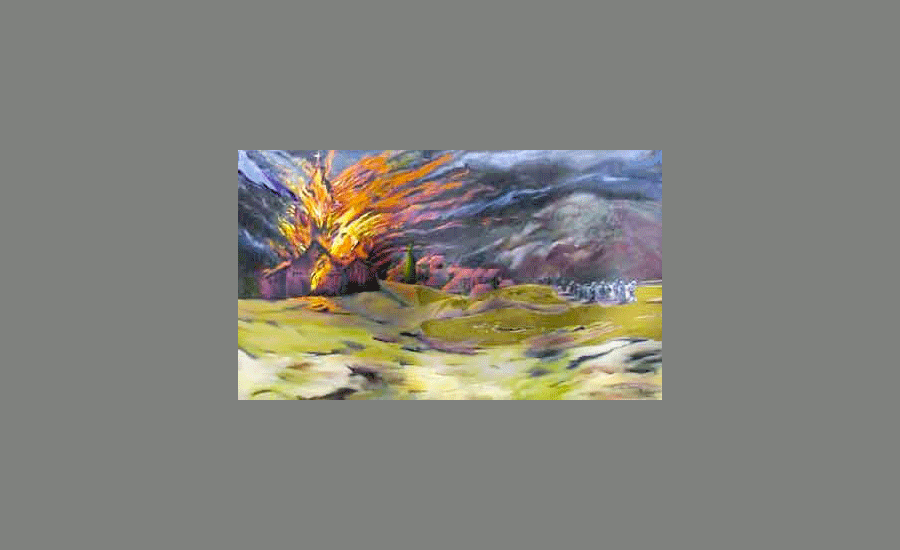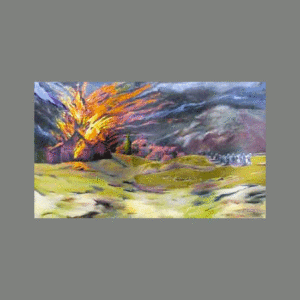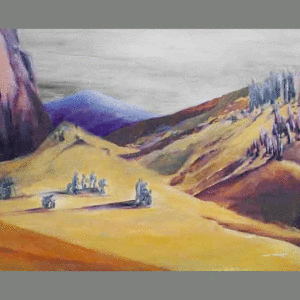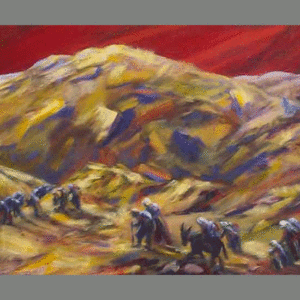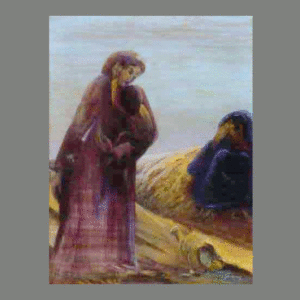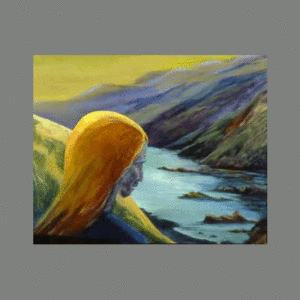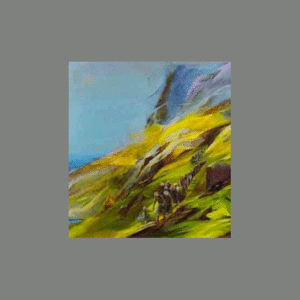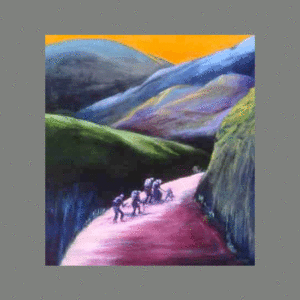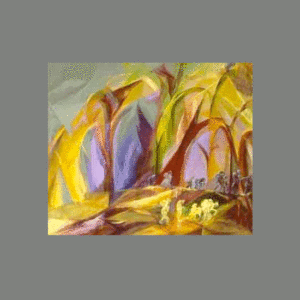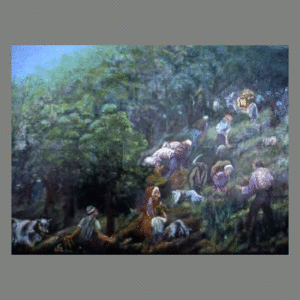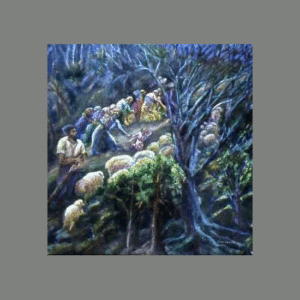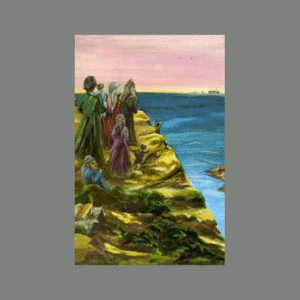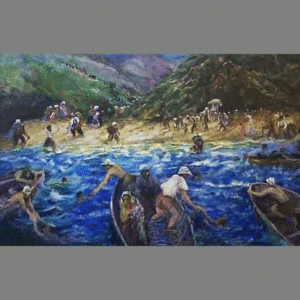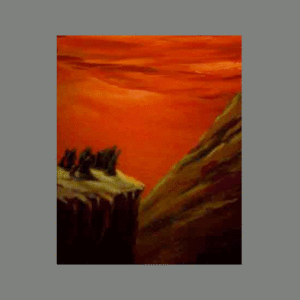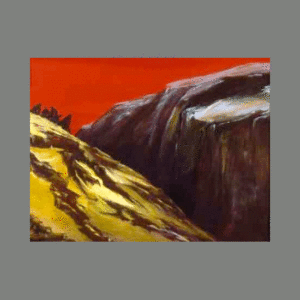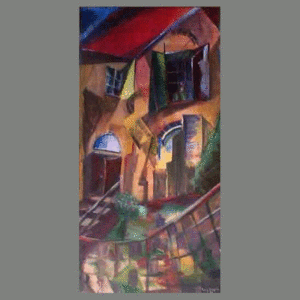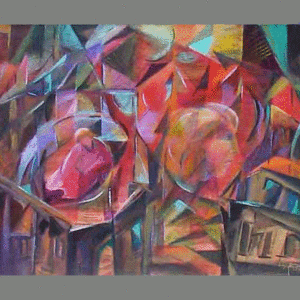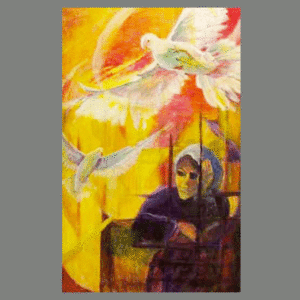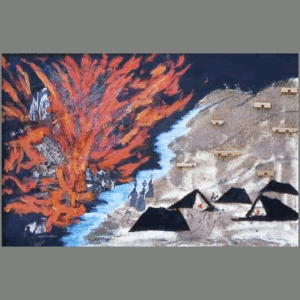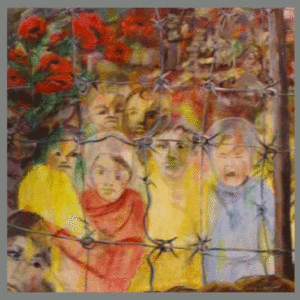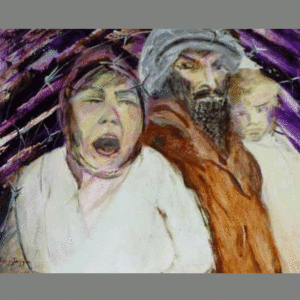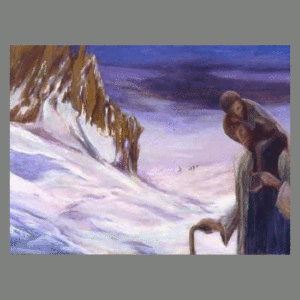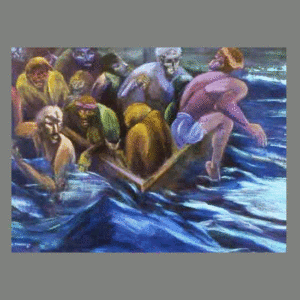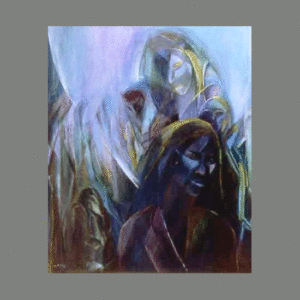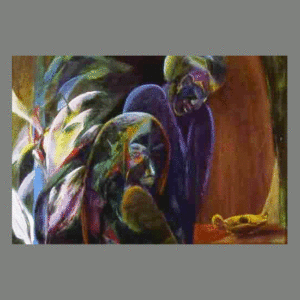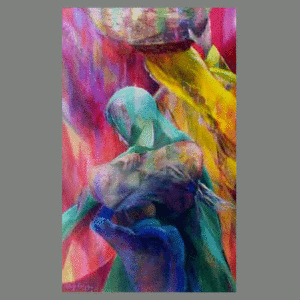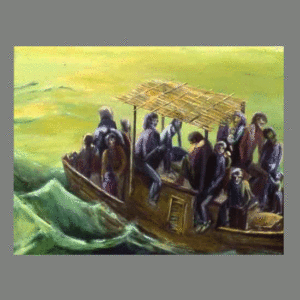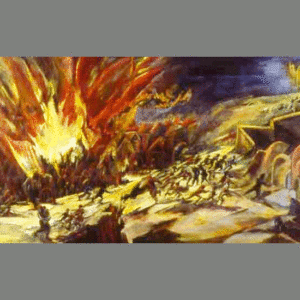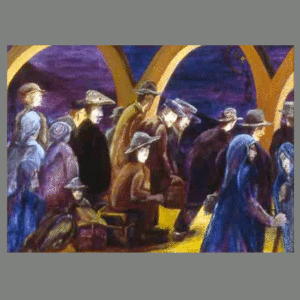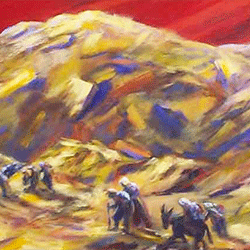
Uprooted
The first 19 paintings depict the plight of the Armenian people who were victims of genocide by Ottoman Turks from 1915 to 1918. Most of those that survived were uprooted and forced to flee their homeland of Armenia.
The rest of the 13 paintings depict Universal Genocide because of man’s inhumanity to man.
Please scroll down for Lucy’s introduction to these paintings.
A presentation of Uprooted is available in DVD format in English and Armenian.
Now, you can stream Uprooted on YouTube.
“The 90th anniversary of the 1915 Armenian genocide by the Turks was commemorated by Armenians worldwide in memory of one and a half million massacred, and for the survivors who were sent on death marches from their homes in Turkey. It was the first genocide of the 20th century that became the blue print for Hitler’s holocaust.
This Turkish atrocity took place during WWI, when Turkey, an ally of Germany, undertook this ignominous act. Britain and France were too involved in the war to pay attention to reports by their envoys and missionaries. America ignored Ambassador Henry Morgenthau’s accounts of the carnage. The Young Turk government took advantage of the situation, and executed this genocide against the Armenians.
To this day, Turkey denies that the genocide occurred, despite overwhelming evidence. The massacres began on April 24, 1915, in Constantinople, when 250 Armenian leaders professors and clergy were rounded up and killed. Thousands of poor Armenians were murdered or deported into the desert.
Lucy’s sensitivity regarding the plight of the Uprooted, is a manifestation of her ethnic background, and the experiences of those close to her. Over the years she has heard personal accounts of these massacres, and has attempted to capture these stories and to express them in her art. Ghost like figures portrayed in dramatic colors, on large canvases, enable the viewer to ponder human suffering.
The artist intends these works to touch us intimately, in a visual statement on humanity’s will to endure. Because of Man’s inhumanity to man, many nations have suffered. These works communicate a universal plight, that of the Uprooted.
—Lucy Janjigian on the “Uprooted” Series, April 24, 2005.

